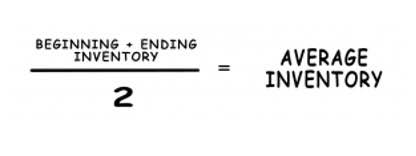What is the difference between FOB Shipping Point and FOB Destination?
What is the difference between FOB Shipping Point and FOB Destination?
February 10, 2022 Comments Off on What is the difference between FOB Shipping Point and FOB Destination?Content

Freight costs are likely to increase drastically when you are shipping goods overseas. It doesn’t matter what you are shipping – shoes, candy, couches, refrigerators, you name it. According to the generally accepted accounting principles , a business cannot record revenue until the transfer of risks and rewards of the goods from the seller to the buyer. This ensures that you can file a claim in the event of loss or damage of the cargo. If you are a seller using FOB destination and you are shipping using a third-party carrier such as US Postal Service or UPS, consider getting insurance on any expensive goods that you ship. The seller must deliver the goods to the port of origin within the agreed upon duration.
What is FOB destination in accounting?
Free on Board: Destination
In a FOB destination agreement, the seller retains ownership of the goods (and is therefore responsible for replacing damaged or lost goods) up until the point where the goods have reached their final destination.
Although FOB has long been stated as “Freight On Board” in sales contract terminology, this should be avoided as it does not precisely conform to the meaning of the acronym as specified in the UCC. Due to potential confusion with domestic North American usage of “FOB”, it is recommended that the use of Incoterms be explicitly specified, along with the edition of the standard. Incoterms apply to both international trade and domestic trade, as of the 2010 revision. Sold” after they’ve transferred title and responsibility to the buyer, this is an important distinction. This means that the seller pays for carrying costs until he places the goods at your disposal anywhere on your premises including storage areas, loading ramps and any connecting parts of your premises. Under the terms of FOB responsibilities for covering costs, losses or damages are divided between both the seller and the buyer. A 2018 study by Ki-Moon Han of the Korea Research Society for Customs looks at the complexities of FOB contracts and explains that they are often misunderstood.
What is FOB shipping point?
Here at Strikingly we deal with several users who run their online stores through their ecommerce website. This is why we think it is an important matter to talk about the legal aspect of commercial agreements in terms of the shipping process. Now that almost everything is being shipped due to the pandemic restrictions, we want to know the answers to the following questions. Who takes ownership and has full responsibility once the packages are shipped? Who can file a claim to the insurance carrier when the products are lost or damaged while in transit?
- This type of shipping term may affect the buyer’s inventory cost due to the costs including all expenses involved in preparing the inventory for sale.
- Failure to properly manage and assess risk regarding purchase and transportation terms can affect any company’s bottom line.
- FOB is the most common agreement between an international buyer and seller when shipping cargo via sea.
- While the transfer of risk occurs when the goods are safely loaded onto the shipping vessel, the buyer’s forwarder is responsible for the entire transportation process.
- “Freight prepaid” refers to the legal fact that the seller is responsible for all freight charges.
The buyer is the one who would file a claim for damages if needed, as the buyer holds the title and ownership of the goods. In FOB Shipping Point buyer must record the purchase as soon as the goods leave the seller’s warehouse . In practice, however, it is difficult for the buyer to record the delivery when the goods leave the seller’s warehouse.
Accounting Topics
In modern domestic shipping, the term is used to describe the time when the seller is no longer responsible for the shipped goods and when the buyer is responsible for paying the transport costs. Ideally, the seller pays the freight charges to a major port or other shipping destination and the buyer pays the transport costs from the warehouse to his store or vendors. Historically, FOB was used only to refer to goods transported by ship—in the U.S., the term has since been expanded to include what does fob shipping point mean all types of transportation. While shipping costs are determined by when the buyer takes ownership of a particular order of goods, a company’s accounting system is also impacted. If a shipment is sent FOB Shipping Point (the seller’s warehouse), then the sale is concluded as soon as the truck pulls out of the seller’s loading dock and is noted in the accounting system as such. The determination of who will be charged the freight costs is usually indicated in the terms of sale.

The seller should help the buyer/importer with acquiring any documentation necessary in the country of origin. Pay the full price agreed upon between the two parties in the agreement of sale. That amazing antique couch you saw in Turkey during your visit – you can easily buy it and have it shipped to your home country.
Free on Board Shipping Point vs. Free on Board Destination: What’s the Difference?
It indicates the point at which the costs and risks of shipped goods shift from the seller to the buyer. Under DES or Delivered Ex Ship, the seller has to deliver the shipment to a specific shipping port, where the buyer would take the delivery. In this case, both seller and buyer record the transaction in their accounts on December 30. The seller will record the sale, increase accounts receivable and reduce the inventory. On the other hand, the buyer will record the purchase, increase the account payable, and increase the inventory as well. FOB shipping point terms indicate that the buyer assumes ownership of the goods as soon as they leave the supplier’s location. Since the package was shipped using shipping point, the title of the goods transferred when GM placed the package on the loading dock.

F.O.B. Shipping Pointmeans Customer takes delivery of Goods being shipped to it by Seller once the Goods are tendered to the carrier. Unlike FOB shipping point, FOB destination, indicates that the ownership of goods is not transferred to the buyer until they arrive at their destination. Import fees when they reach the border of one country to enter the other country under the conditions of FOB destination are due at the customs port of the destination country. International shipments typically use “FOB” as defined by the Incoterms standards, where it always stands for “Free On Board”. Domestic shipments within the United States or Canada often use a different meaning, specific to North America, which is inconsistent with the Incoterms standards. The term “free on board”, or “f.o.b.” was used historically in relation to the transfer of risk from seller to buyer as goods are shipped. FOB destination, on the other hand, would not have recorded the sale until the package was delivered.
Free Freightos Tools
If a buyer takes responsibility for a shipment when they purchase it the seller doesn’t need to price up delivery routes, sort out export taxes, etc, so the process is a lot simpler for them. FOB is good for a seller as once the product leaves the warehouse the shipment is the responsibility of the buyer. If the shipment is damaged or lost the buyer will need to claim back on it, while the seller considers the deal done once it leaves their premises. It requires the supplier to pay for the delivery of your goods up until the named port of shipment, but not for getting the goods aboard the ship. It is in the buyer’s best interest to have the shipping terms be stated as FOB (the buyer’s location), or FOB Destination. Furthermore, these factors lead to increase the risk of damage or loss of the goods, something else you must factor in your overall cost estimation when planning for international shipping. The buyer takes up all risks of damage or loss of goods once they are loaded onto the vessel at the port of origin.

As logic would denote, the further away you’re shipping your freight, the more complicated the process becomes. In this case, the seller can either reimburse the European company for the cost of the equipment, or the seller can reship the items. This type of shipping term may affect the buyer’s inventory cost due to the costs including all expenses involved in preparing the inventory for sale.
Disadvantages of Shipping FOB for the Buyer
The author states that there is often confusion because the parties involved in the contracts misunderstand incoterms FOB, sales contracts, carriage contracts, and letters of credit. Han urges companies to use caution and to clarify which type of FOB they https://www.bookstime.com/ are entering into so that the risks and liabilities are clear. Similarly, when Old Navy incurs other costs related to inventory, such as renting a warehouse, paying for utilities, and securing the warehouse, those costs are also added to inventory.
- The buyer is charge of all costs after the goods are loaded onto the vessel at the port of shipment.
- FOB Shipping Point is the terms of a sale in which legal title to the goods transfers from the seller to the buyer when those goods leave the seller’s warehouse, and as a result, the buyer pays the freight charges.
- You are therefore the one who will be required to file a claim so as to be reimbursed.
- Under DES or Delivered Ex Ship, the seller has to deliver the shipment to a specific shipping port, where the buyer would take the delivery.
With a FOB shipping point sale, the buyer assumes all responsibility and legal liability for the goods purchased. This means that the buyer is responsible for recording the sale at the point of transport within their accounts payable, meaning that an increase in their inventory has taken place. Conversely, the seller records the point of sale at the time of shipment and records the sale within their accounts receivable, as an added payment, whether the payment has been made or is waiting to be made. With FOB destination, the title of ownership may not be transferred to the buyer until the goods reach the buyer’s destination, either on a loading dock, post office box, home or office building. Since the buyer takes ownership at the point of departure from the supplier’s shipping dock, the supplier should record a sale at that point. The buyer should record an increase in its inventory at the same point (since the buyer is undertaking the risks and rewards of ownership, which occurs at the point of departure from the supplier’s shipping dock). Also, under these terms, the buyer is responsible for the cost of shipping the product to its facility.